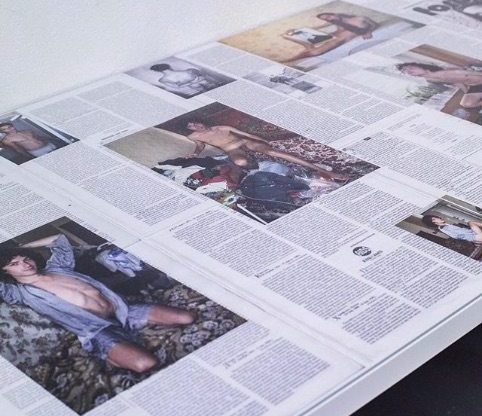An exhibition cataloguing the lives of former Eastern Bloc LGBT people has come to the UK

An avid researcher has brought to life the little-known queer archives of former Soviet Union countries after years of painstaking research for an exhibition in the UK.
Karol Radziszewski, who is an arts graduate from Warsaw’s Academy of Fine Arts, began collating the secret lives of queer people in the former Soviet Bloc countries, shedding light on their lives after male homosexuality was made a crime in the USSR in the 1930s.
Radziszewski first started cataloguing the lesser-known lives of Eastern European queer men in DIK Fagazine in 2005.
He then expanded his work when he established the Queer Archives Institute (QAI), which has toured in the likes of Brazil and Belarus to showcase his work, which will is now showing at Centrala in Birmingham.
https://www.instagram.com/p/Bda4DioBWhj/?taken-by=karolradziszewski
“For a long time, in Poland, as well as in many other post-socialist States, homosexuality remained taboo after the political transformation; and it was often treated as something that “had arrived from the West”,” said Karol to PinkNews.
“This argument is largely present in the region, especially in those countries still under strong influence of the Roman Catholic or Orthodox Church. I thought there was a serious need to prove that queer culture existed here already during the socialist era.”
In order to carry out his groundbreaking research, Radziszewski travelled across the former Soviet countries to find his sources.
Karol said that it was hard to find just one story that stood out in his research.
“It’s hard to mention just one story as they are very different but one of my most interesting and valuable discoveries was Ryszard Kisiel and his slides dated from late 1985 and early 1986, created as a direct response to Operation Hyacinth (a comprehensive campaign carried out by the Civic Militia in the Polish People’s Republic, which consisted in the gathering of data on Polish gay men and their community, as a result of which approximately 11 000 personal files were registered),” said Karol.
“The discovered slides provide specific visual evidence and contradict the stereotypical way of thinking about Poland during socialist times. They counter the image of a homosexual as a persecuted victim, revealing a large potential of positive energy, uninhibited sexuality, invention, irony and self-irony.”
Although the first magazines dedicated to homosexuality were found in the Czech Republic as early as 1931, Radziszewski believes that there is still a large homophobic presence in some former Eastern Bloc countries, including his home nation of Poland.
It’s important to share Central Eastern European queer archives with a wider audience so the people would learn how different particular countries of the region are. And how those queer stories could be important to understand what is happening now,” said Karol.
And now, more than ever, LGBT people in Eastern Europe need help.
“All forms of protest or petitions are important wherever you see the acts of homophobia being not punished or even not recognized by the local authorities (like it’s happening in Poland quite often). Althought it’s not comparable with what is happening in Russia and Chechen Republic, where they are abducting and killing gay men. We have to be loud,” he said.
The exhibition will run from January 2 to January 6 2018.
Images: Karol Radziszewski

